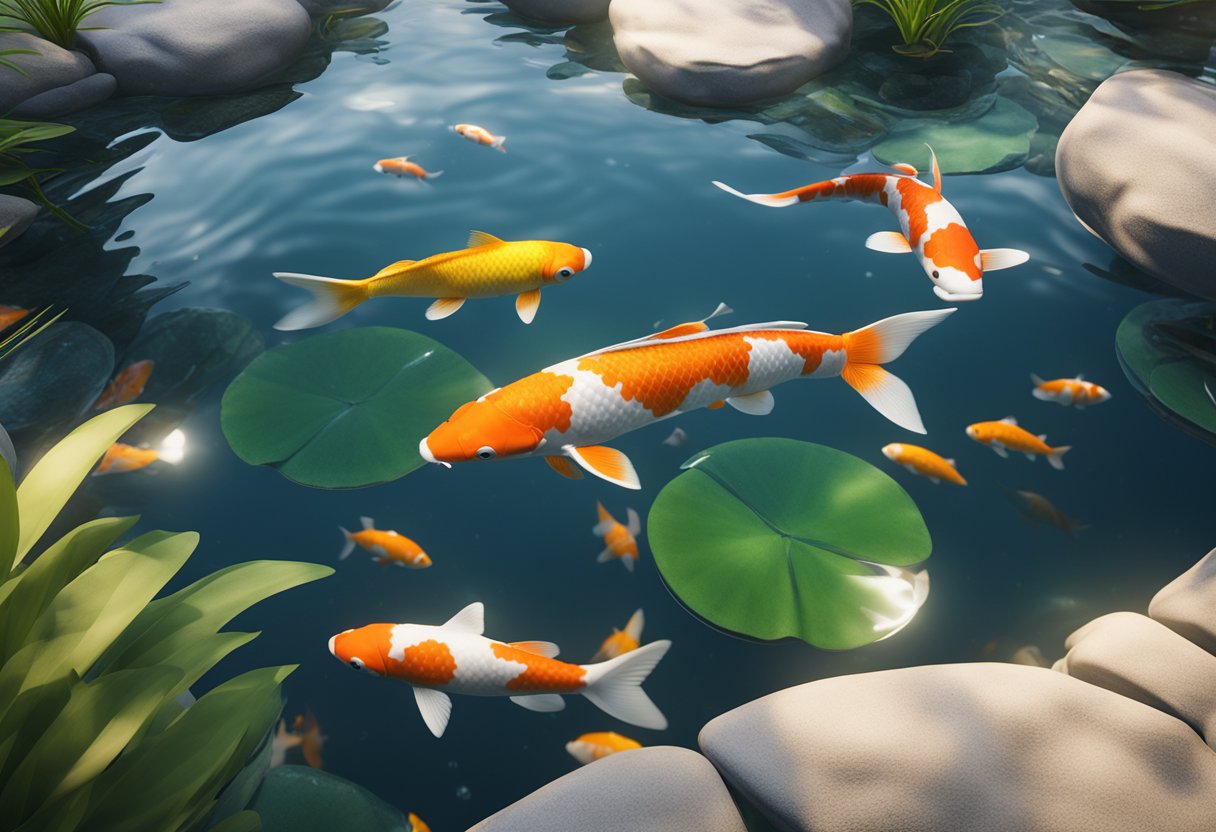Koi Pond Care: Water Quality Maintenance Tips

When it comes to caring for koi fish, water quality maintenance is crucial. But how much do you really know about the impact of water quality on koi pond health? Are you taking all the necessary steps to ensure your koi fish are thriving in a clean and healthy environment?
In this article, we will delve into the world of water quality maintenance for koi ponds, providing you with essential tips and insights to keep your koi fish happy and vibrant. From understanding the role of water quality in koi health to testing and monitoring best practices, we will explore the key aspects of maintaining optimal water conditions. We will also discuss the vital importance of a proper filtration system, techniques for maintaining water clarity, and how to balance pH and oxygen levels effectively.
But that’s not all – we will uncover the secrets of temperature control in koi ponds and guide you through common water quality issues you might encounter along the way. So, are you ready to dive into the world of koi pond water quality maintenance and take your koi fish care to the next level?
Understanding the Role of Water Quality in Koi Health
Proper water quality plays a critical role in the health and well-being of koi fish. Maintaining optimal water conditions is essential to ensure their longevity and vibrant colors. By understanding the specific water parameters that affect koi, pond owners can provide an environment that supports their thriving nature.
Maintaining water quality for koi fish is a delicate balance that requires careful attention to various factors. The optimal water quality for koi includes parameters such as pH level, ammonia and nitrite levels, dissolved oxygen, and temperature.
When the water quality is compromised, koi fish may experience stress and become susceptible to diseases and infections. Poor water conditions can also hinder their growth and vitality. Ensuring a clean and well-maintained pond is crucial for the overall health of these beautiful fish.
Water Parameters for Optimal Koi Health
Let’s take a closer look at the specific water parameters that need to be monitored and maintained at their optimal levels to support the well-being of koi fish:
| Water Parameter | Optimal Range |
|---|---|
| pH Level | 7.0 – 8.5 |
| Ammonia Level | 0 ppm |
| Nitrite Level | 0 ppm |
| Dissolved Oxygen | 6 – 8 ppm |
| Temperature | 72 – 78°F (22 – 25.5°C) |
Maintaining water quality for koi fish involves regular testing of these parameters to ensure they are within the optimal range. Any deviations from the ideal levels should be addressed promptly to prevent potential health issues.
Next, we’ll explore how to properly test and monitor water quality in koi ponds to ensure the ongoing health and vitality of these magnificent fish.
Testing and Monitoring Water Quality
Ensuring proper water quality in your koi pond is essential for the health and well-being of your koi fish. Regular testing and monitoring are key to maintaining optimal water conditions. By understanding the essential parameters to test, recommended testing methods, and the frequency of testing, you can create a thriving environment for your beloved koi.
Essential Parameters to Test
When testing the water quality of your koi pond, it’s important to focus on specific parameters that directly impact the health of your fish. These parameters include:
- pH levels: The acidity or alkalinity of the water
- Ammonia levels: The presence of excess ammonia, which can be harmful to koi
- Nitrite levels: The concentration of nitrites, a byproduct of the beneficial bacteria breaking down ammonia
- Temperature: The ideal temperature range for koi fish
- Oxygen levels: The amount of dissolved oxygen in the water
Recommended Testing Methods
There are various testing methods available to accurately assess the water quality in your koi pond. Some popular methods include:
- Liquid test kits: These kits typically come with reagents and test tubes, allowing you to measure the different water parameters.
- Digital test kits: Digital meters offer precise measurements and are often more convenient to use, providing fast results.
- Test strips: These strips contain reactive pads that change color based on the water parameters, providing a quick and easy way to assess multiple parameters at once.
Frequency of Testing
To maintain optimal water quality in your koi pond, it’s important to establish a regular testing schedule. Generally, it is recommended to test the water parameters at least once a week. However, during the initial setup of a new pond or if you notice any abnormal behavior in your koi, more frequent testing may be necessary. Regular testing allows you to identify any issues promptly and take appropriate measures to rectify them.




